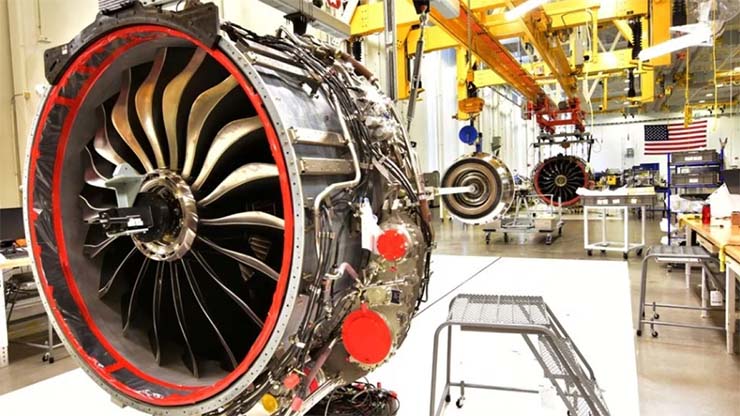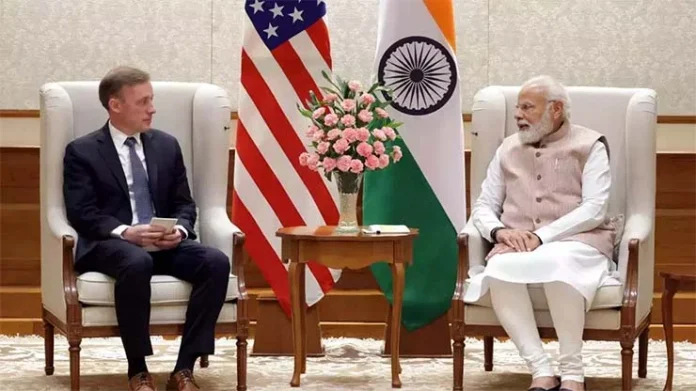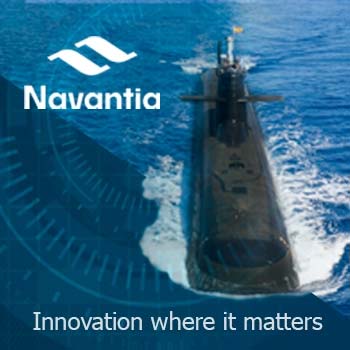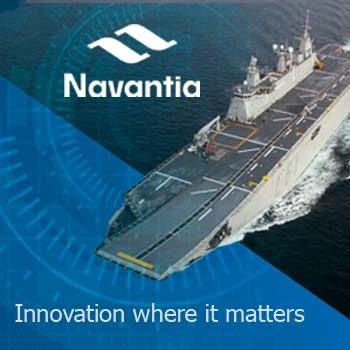The US and Indian Defence establishments remain buoyant about a possible deal being struck in the near future between General Electric, a large aerospace company based in Massachusetts, and Hindustan Aeronautics Ltd (HAL) to co-manufacture fighter jet engines in India. It is expected to have a “ripple effect” across the American and Indian defence industries, according to Atul Keshap, president of the US India Business Council (USIBC) – a top US business advocacy group – in an interview with news agency PTI.
The two companies are expected to announce the deal during the official State Visit of Prime Minister Narendra Modi to the US. According to a source cited by CNBC-TV18, the agreement between GE and HAL will comprise an astonishing 80% transfer of jet engine technology, marking a key milestone in the two countries’ defence partnership.
Geopolitics of the Engine Deal
Modi on his first official state visit, will speak to the US Congress and also attend a State Banquet hosted by President Joe Biden. The US National Security Adviser, Jake Sullivan, on June 13-14, visited New Delhi ahead of Modi’s US visit this week. He held deliberations with Modi, External Affairs Minister S Jaishankar and his Indian counterpart, Ajit Doval. At a meeting in New Delhi on Tuesday last week, Sullivan said that some of the results of Modi’s visit “are not just bullet points on a page. Their main goal is to get rid of barriers to trade in defence, high technology and investment in each of our countries.”
If finalised, the announcement of the engine deal would signify greater military cooperation between the two countries in response to China’s growing assertiveness in the regional and global geopolitics. The Biden Administration is trying to strengthen its ties with countries that are important to fighting what it sees as a growing threat from China.
In order to pull away India from Russia’s sphere of influence, the US seems ready to overlook India’s democratic backsliding as it works to strengthen its ties with the South Asian country. Concerns about China have made ties between India and the US stronger, but there are still big gaps “in the fields of values and vision”, said Sushant Singh, a senior fellow at the Centre for Policy Research, a New Delhi-based think tank adding, “These are being pushed aside by interests right now”.
Sources say the White House is likely to approve General Electric Company’s plan to work with state-owned HAL to make engines for the Tejas light combat aircraft. The agreement on jet engines will need to be ratified by the US Congress. India is counting on a general improvement in bonhomie and support from American’s two political parties to help clear the last few hurdles.
The US has never shared engine technology with another country to this extent. According to a source acquainted with the agreement, “no country has ever received this level of technology transfer from the US, the UK, or France.” The technology transfer is likely to happen gradually, in stages, over the next few years. Within three years, India is expected to contribute 80% of the value added to the engine through this technology transfer process.
Modalities of the Engine Deal
Negotiating teams from India and the US are currently working on finalizing payment arrangements, machinery procurement and technology transfer modalities. The technology transfer will cover numerous critical manufacturing aspects of GE jet engines. These include special coating for erosion and corrosion, turbine repair technology, compression disc and blade repair, coating and machining of single crystal turbine blades, machining and coating of hot end parts, complete tech-transfer for blisk machining, powder metallurgy machining, polymer matrix composite machining, laser drilling for combustion and bottle boring of shafts.
As Russia’s war in Ukraine drags on for a second year, the jet engine deal would fit in with Modi’s larger plan to boost defence manufacturing in India. This would be done through technology relationships with countries that want to bring New Delhi into their orbit. Russia – India’s all-weather friend – was the largest supplier of arms to India between 2018 and 2022, accounting for 45% of all arms imports, according to a report by the Stockholm International Peace Research Institute (SIPRI), and is still India’s biggest source of military equipment. But sales have slowed by 19% in the past five years because of sanctions and more competition from other countries.
India’s fighter jet project and air force will be strengthened by making the GE engines in India. This is because India’s fleet of Russian fighters is getting older and needs to be replaced. It will also help Modi to showcase India’s proximity to the US besides bolstering his reputation as a statesman as he runs for a third term in next year’s national elections.
India and the US will, probably, also move closer to agreements on other defence deals- such as India’s plan to buy more than a dozen armed drones that could greatly improve its sea and land defences. Sources said its unmanned aircraft can only be used for observation and reconnaissance at the moment. In the summer of 2020, when tensions at the border with China were high, New Delhi borrowed two MQ-9B drones from the US.
The deal with General Atomics, based in San Diego, has been mired in government red tape for years. The two countries will also talk about co-producing the Stryker, an armoured personnel carrier with eight wheels, in India.

Deal’s Importance for India
The most complicated parts of an aeroplane are in its engine. It has to perform right from ignition stage up to very high attitudes and in weather conditions that keep changing. It has to work from zero to supersonic speeds and in high positive and negative ‘g’ situations. Many engine parts have to work at very high speeds and temperatures. All of this calls for extremely unique design, high quality materials, besides precision assembling. A contemporary, or modern, engine may operate for several thousand hours. A plane’s engine typically accounts for close to one-third of the entire cost of the plane.
Due to the complexity, only a small number of advanced nations have such engine manufacturers, who show a reluctance to share their technologies, which, in any case, are under the control of their respective governments.
Big Engine Manufacturers and GE
A small number of primarily Western manufacturers dominate the market for turbofan engines. They produce both civilian and military engines. Pratt & Whitney, Rolls Royce, GE Aviation and Safran are the top four producers of turbofan engines for aircraft. CFM International is a joint venture for civil aircraft between GE and French company Safran. Additionally, Japanese Aero-engine Corporation and German MTU Aero Engines have a joint venture with Pratt & Whitney, called International Aero Engines.
India’s Engine Quest
The Gas Turbine Research Establishment (GTRE), a defence public sector undertaking (DPSU), is working on afterburning turbofan project – GTX-35VS Kaveri. The HAL Light Combat Aircraft (LCA) Tejas was the engine’s intended target aircraft. The Kaveri programme was, however, officially delinked from the Tejas programme in September 2008 since it was unable to meet the necessary technical standards and adhere to its planned timetables. The DRDO Ghatak UCAV is currently being powered by a dry version of the Kaveri engine.
The Kaveri engine is still being developed in the interim. Godrej & Boyce, a private company in India, has been awarded the contract to produce six more engines for additional testing. The engine had successful high-altitude tests in Russia in February 2023. There are plans by GTRE to integrate the Kaveri with DRDO Ghatak. The Kaveri engine for fighter aircraft is still under consideration and whether or not external assistance is requested will depend upon how the development proceeds.
General Electric (GE) is a major aviation engine manufacturer whose products include the CF6 for the Boeing-767, Boeing-747 and Airbus A330. The GE90 powers a Boeing-777. The GenX was designed for the Boeing-747-8 and -787 Dreamliner and it was planned for the Airbus A350. The GE9X, used on the Boeing-777X, is currently the most powerful engine in the world.
Many US military aircraft are also powered by GE engines. The F110 engine powers the F-16, while the F404 and F414 engines power the F-18 models. The F404 is also used to power India’s LCA Tejas Mk1 and Mk1A. The F414 has been selected for the LCA Mk2 and may be the first Advanced Medium Combat Aircraft (AMCA). Nearly 60 F404-GE-IN20 engines were ordered for the LCA Mk-1 programme, with another 99 ordered for the Mk-1A.
For four decades, GE Aerospace has been expanding its presence in India through joint ventures. More than 800 GE (Leading Edge Aviation Propulsion (LEAP) engines were ordered in bulk by Air India. In 2016, LEAP engines – which are incredibly dependable and fuel-efficient – went into service. There are around 2,500 LEAP engine variations in flight. In 2017, GE and the Tata Group of India inked a contract to produce LEAP engine parts for the worldwide supply chain. Additionally, the two businesses had then declared their intention to work together to develop chances for military engines and aircraft systems for the Indian market.
Criticality of Aero-Engine Technology
India has become an expert at designing and constructing aero-structures for both fixed-wing and rotary-wing aircraft over the previous few decades. But it still has to advance much further. Though significantly, airborne radars, avionics and missiles are produced in India.
The aero-engine, on the other hand, is significantly more difficult and, despite years of licensed manufacture and foreign engine overhauls, India has not been able to develop its own aero-engine with any degree of success. The few producers play it extremely safe and are reluctant to disclose the innovations they have developed over many years of study and investment. Joint ventures are the only convenient method of obtaining the expertise.
Thus, the American offer, negotiated by the respective National Security Advisers and authorized at the President’s level, is extremely important. However, the extent to which this technology is truly transmitted will become clear after the fine print of an agreement is established and reviewed.
India and the US are conducting more bilateral and multinational military exercises to strengthen interoperability. India and the US Defence and Trade Initiative (DTTI) has pushed for the engine agreement and is looking into new areas of technological partnership and growth. The US has recognized India as a Strategic Trade Authorization-1 (STA-1) country, allowing US corporations to purchase cutting-edge sensitive technologies from India. Appropriately, the USIBC’s primary concentration is also on aerospace and defence. Under different working groups, the India-US Defence Policy Group (DPG) in Washington closely monitors defence cooperation, technology, trade and military-to-military interactions.
With several single and twin engine aircraft on the horizon for acquisition, the chosen engine’s reliability must be very good, as well as its fuel efficiency, range and endurance. Notably, in addition to the high thrust-by-engine weight requirements, acquisition of newer and emerging technologies must be considered while conducting government-to-government transactions.
It would also be a smart idea to enter the maintenance, repair and overhaul (MRO) industry by fostering such collaborations between global OEMs and private sector firms in India.
–The writer is a Defence, Aerospace & Political analyst. The views expressed are of the author and do not necessarily reflect the views of Raksha Anirveda
-The author is a Defence, Aerospace & Political Analyst based in Bengaluru. He is also Director of ADD Engineering Components, India, Pvt. Ltd, a subsidiary of ADD Engineering GmbH, Germany. You can reach him at: girishlinganna@gmail.com. The views expressed are personal and do not necessarily carry the views of Raksha Anirveda

















